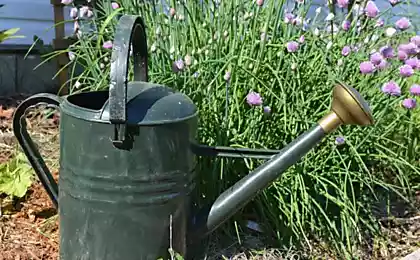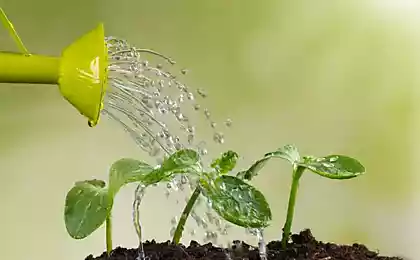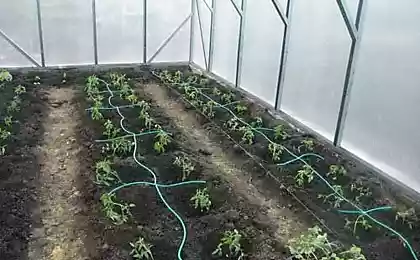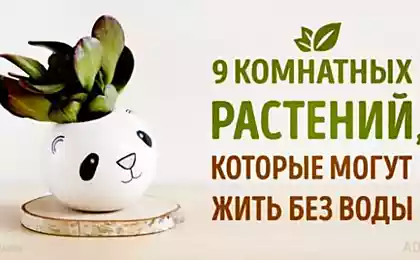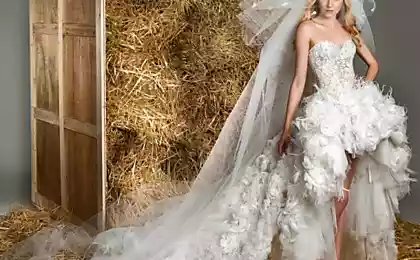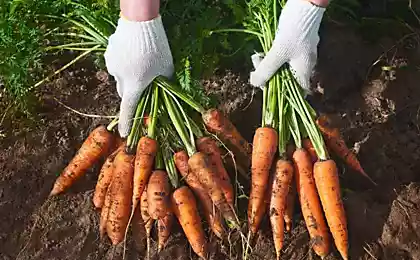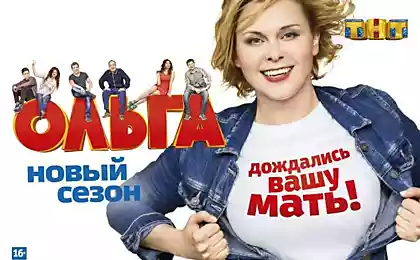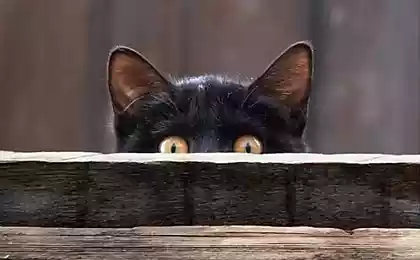203
Spring is coming soon - we are preparing to water the garden plot
How to provide plants in the garden or suburban area with moisture is not an easy question. Though it would seem - what is difficult here? He took out a bucket of water and poured it where it was needed. Or did the same thing with a hose. However, as in every case, the watering of the site has its subtleties.
Ultimately, it all depends on what you want to get “on the way out”: berries, fruits, vegetables and flowers or an obscure puddle in the middle of your yard. Consider the various irrigation and irrigation systems to choose the best one for your conditions.
Drip irrigationThe first method is drip irrigation. In order to do this, we go and buy a hose for drip irrigation. Then we plant our plants (say - strawberries) so that the distance between the bushes is strictly equal to the distance between the holes on the hose.
Otherwise, you will water not only strawberries, but also weeds. See? That was the first subtlety. Therefore, I advise not to throw in the trash, but to stock up a few plastic bottles.
We cut the bottom of them, make holes in the cork (only not very large), pour water into bottles, and hang them from the side of the plants. Turning the cork, you can achieve the desired flow of liquid: for example, after rain, the ground will be wet for some time, and you do not need abundant round-the-clock watering. Every few days, water will need to be added to the bottle.
Tip: Put pebbles or pieces of plastic around the bed so that the water does not blur the soil.
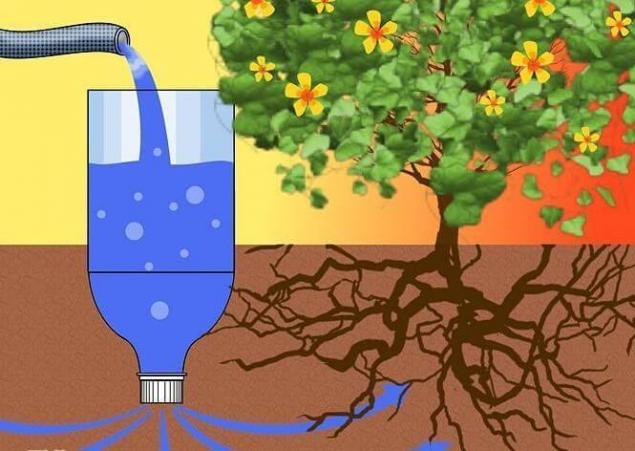
Another option is to bury plastic bottles at an angle of 40 degrees to the roots of the plants at a distance of 20 cm from the root itself. And also periodically add water there. This method is suitable if you do not have anything on the site to fasten the bottles above the ground.
There's another way of dripping. And it's a little easier. As I said before, we need to take a hose, put it along the bed and make a hot stitch hole in it where our plants grow. It is better to lay the hose in a specially dug groove for this. Do the holes? Dig the hose a little with the earth. The end of the hose should be closed with a plug so that water does not pour out on the other side.
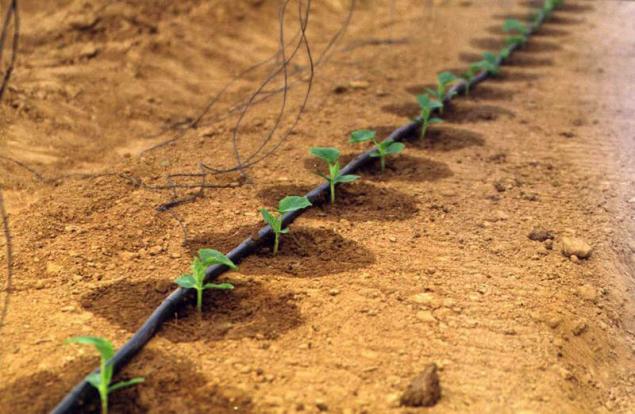
The other side attach the hose to the tap. This method is convenient because you can effortlessly water the whole bed and do not worry that you did not add water to the bottle. This method of irrigation has almost no disadvantages, except for the hose, which will no longer be suitable for anything. Instead of a hose, you can put a tape of fabric along the entire length of the bed (only without tears) and lower the end of the tape into a container with water. The tape should also lie in a specially dug groove. Capacities can be buried throughout the garden and also lay ribbons.
Some nuances of wateringBefore planting anything, you should clearly imagine whether there is groundwater on your site. If there are and lie at a depth of less than 3 meters - you will need to either drain or plant delicate crops (for example, strawberries) on a high, specially sprinkled bed. In the bright sun, the garden is not watered: you can burn plants like the skin on the beach. It is more useful to do this in the morning and evening, before the sun has risen too high, and when it is already setting.
If you have apple trees or currants on the site, they also need to be watered periodically. Of course, less than cucumbers and tomatoes, but more abundantly.. Watering should be near the root, preferably in a circle, so as not to pour the root part. It is even better to make a groove around the root and pour water there. The groove after watering should be buried, and next time make a new one. Of course, this is time-consuming, but if you want to get a good harvest, and not rotten bushes on the site - try still worth it.
Tip: Never water the plant in the same place. You will simply fill the roots and your bushes will die!
Irrigation depthTo what depth should the plants be watered?
The answer to this question depends on the type of plant and its age. For example, young pears and apple trees are watered to a depth of half a meter to 70 cm, black currants - 40 cm, and gooseberry bush will suffice and 25 cm. Fruit-bearing cherries will also be enough half a meter depth of watering, apple trees can be watered 30 cm deeper. Adult berry bushes as a whole can be watered as follows: one or 2 buckets per bush of a young plant and 3-4 buckets per bush of an adult.
What if you can’t regularly check the soil for humidity and spend a lot of time on your garden? And at the same time, you want to have a green area on which not only weeds grow? Plant Japanese quince and hawthorn. This, of course, is not tea with currants, but the site will look well-groomed and inhabited. And jam and cucumbers can be bought at the store or from less busy neighbors.
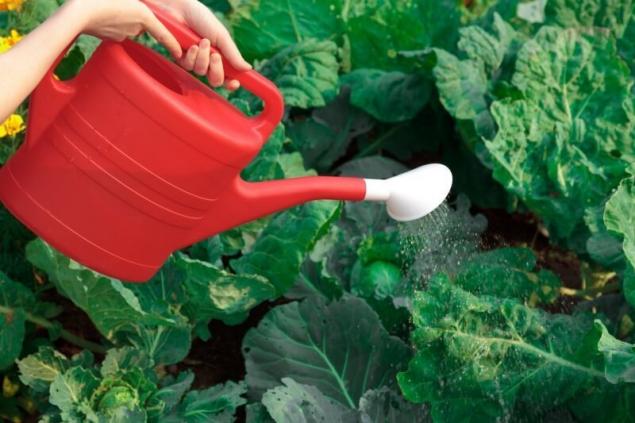
And finally, I'm going to tell you who likes what kind of water — all of a sudden you need it, and you want to grow your own pumpkin for Halloween. Pumpkin and zucchini prefer warmer water, cabbage likes cool water (preferably in the form of a shower), and greens and salad can be watered with water in 15 degrees - they perfectly tolerate it. Also, cold water like carrots and beets. published
Author: Olga Yanyutina P.S. And remember, just changing our consumption – together we change the world!
Source: estp-blog.ru/rubrics/rid-40227/
Ultimately, it all depends on what you want to get “on the way out”: berries, fruits, vegetables and flowers or an obscure puddle in the middle of your yard. Consider the various irrigation and irrigation systems to choose the best one for your conditions.
Drip irrigationThe first method is drip irrigation. In order to do this, we go and buy a hose for drip irrigation. Then we plant our plants (say - strawberries) so that the distance between the bushes is strictly equal to the distance between the holes on the hose.
Otherwise, you will water not only strawberries, but also weeds. See? That was the first subtlety. Therefore, I advise not to throw in the trash, but to stock up a few plastic bottles.
We cut the bottom of them, make holes in the cork (only not very large), pour water into bottles, and hang them from the side of the plants. Turning the cork, you can achieve the desired flow of liquid: for example, after rain, the ground will be wet for some time, and you do not need abundant round-the-clock watering. Every few days, water will need to be added to the bottle.
Tip: Put pebbles or pieces of plastic around the bed so that the water does not blur the soil.

Another option is to bury plastic bottles at an angle of 40 degrees to the roots of the plants at a distance of 20 cm from the root itself. And also periodically add water there. This method is suitable if you do not have anything on the site to fasten the bottles above the ground.
There's another way of dripping. And it's a little easier. As I said before, we need to take a hose, put it along the bed and make a hot stitch hole in it where our plants grow. It is better to lay the hose in a specially dug groove for this. Do the holes? Dig the hose a little with the earth. The end of the hose should be closed with a plug so that water does not pour out on the other side.

The other side attach the hose to the tap. This method is convenient because you can effortlessly water the whole bed and do not worry that you did not add water to the bottle. This method of irrigation has almost no disadvantages, except for the hose, which will no longer be suitable for anything. Instead of a hose, you can put a tape of fabric along the entire length of the bed (only without tears) and lower the end of the tape into a container with water. The tape should also lie in a specially dug groove. Capacities can be buried throughout the garden and also lay ribbons.
Some nuances of wateringBefore planting anything, you should clearly imagine whether there is groundwater on your site. If there are and lie at a depth of less than 3 meters - you will need to either drain or plant delicate crops (for example, strawberries) on a high, specially sprinkled bed. In the bright sun, the garden is not watered: you can burn plants like the skin on the beach. It is more useful to do this in the morning and evening, before the sun has risen too high, and when it is already setting.
If you have apple trees or currants on the site, they also need to be watered periodically. Of course, less than cucumbers and tomatoes, but more abundantly.. Watering should be near the root, preferably in a circle, so as not to pour the root part. It is even better to make a groove around the root and pour water there. The groove after watering should be buried, and next time make a new one. Of course, this is time-consuming, but if you want to get a good harvest, and not rotten bushes on the site - try still worth it.
Tip: Never water the plant in the same place. You will simply fill the roots and your bushes will die!
Irrigation depthTo what depth should the plants be watered?
The answer to this question depends on the type of plant and its age. For example, young pears and apple trees are watered to a depth of half a meter to 70 cm, black currants - 40 cm, and gooseberry bush will suffice and 25 cm. Fruit-bearing cherries will also be enough half a meter depth of watering, apple trees can be watered 30 cm deeper. Adult berry bushes as a whole can be watered as follows: one or 2 buckets per bush of a young plant and 3-4 buckets per bush of an adult.
What if you can’t regularly check the soil for humidity and spend a lot of time on your garden? And at the same time, you want to have a green area on which not only weeds grow? Plant Japanese quince and hawthorn. This, of course, is not tea with currants, but the site will look well-groomed and inhabited. And jam and cucumbers can be bought at the store or from less busy neighbors.

And finally, I'm going to tell you who likes what kind of water — all of a sudden you need it, and you want to grow your own pumpkin for Halloween. Pumpkin and zucchini prefer warmer water, cabbage likes cool water (preferably in the form of a shower), and greens and salad can be watered with water in 15 degrees - they perfectly tolerate it. Also, cold water like carrots and beets. published
Author: Olga Yanyutina P.S. And remember, just changing our consumption – together we change the world!
Source: estp-blog.ru/rubrics/rid-40227/
